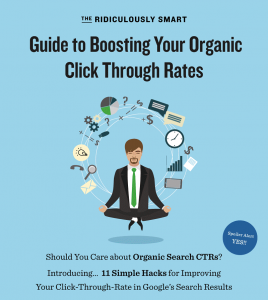24/7/365, many markets across the world are endeavoring endlessly to figure out what are their consumer’s triggers for making a buying discussion or so called “Human Buy Button.” Meaning, is there a way for us marketers to actually decide what people will buy even if they don’t actually need the product or service offering we are trying to sell them only by understating how the human brain operates?

The simple answer by Patrick Renvoise (Chief Nueromarker at SalesBrain) is yes! However, in order to understand how to activate the human buy button one needs to understand the basics about the human brain…
In general, your brain is divided to 3 main parts that come into play when making a buying decision:

A. Neocortex – the rational part of the brain (has the lowest impact on our decision making).
B. Limbic – the emotional part of the brain (has a greater influence on our decision making).
C. Reptilian – the instinctual part of the brain (has the greatest influence on our decision making).
How do you stimulate the Reptilian Brain?
1. Incorporate creative photos from the customer’s point of view

The Reptilian part of the brain is self centered, thus, advertisers who are familiar with Neuromarkting use creative ad pictures that were shot for the point of view of the of the potential customer (reader in this example). Hence, when you open this magazine and see this photo in essence your mind already imagining that this is you inside the photo.
What else do advertisers do to stimulate our Reptilian Brain?
Sophisticated advertisers use the words “you, your and yours” when they want to communicate or interact with you:

2. Contrast
Before/after, with/without, slow/fast all enable the “Reptilian Brain” to make a decision. Contrast is perceived as a “safe” decision engine. It allows the “Reptilian Brain” to make quick and “safe” decisions. Without contrast, the ‘Reptilian Brain’ enters a state of confusion, which ultimately results in delaying the decision.

3. Tangible
The “Reptilian Brain” can barley understand words and be won’t decide based on numbers alone. The ‘Reptilian Brain’ is constantly scanning for familiarities and things that can be recognized quickly, in order to process the information. Even more so, when trying to market “flexible solution”, “integrated approach”, or “scalable architecture” the Reptilian Brain cannot process these types of complex concepts without effort and doubt. Hence, it’s crucial to factor in tangible marketing when trying to gain acceptance of a complex product or service by the marketplace.

4. Beginning & End
The ‘Reptilian Brain’ is very receptive in the beginning & end of every interaction and forgets almost everything in the middle. This short attention span has huge implications on how to construct and deliver powerful messages. Placing the most important content at the beginning is a must, and repeating it at the end is imperative! Keep in mind that anything you say in the middle of your delivery will most likely be forgotten.

5. Visual
The optic nerves of your brain are plugged directly into the ‘Reptilian Brain’ which happen to be 50 times faster than your auditory nerves (the nerves that connect the ear to the brain). Neuroscience demonstrates that when you see something that looks like a snake, your ‘Reptilian Brain’ warns you instantly of danger so that you react even before the neocortex physically recognizes it’s a snake.

6. Emotion
The ‘Reptilian Brain’ is strongly triggered by emotions. Neuroscience has clearly demonstrated that “emotional cocktails” trigger chemical reactions that directly impact the way we memorize and act. Thus, to make your ad memorable it has to trigger some kind of emotion when viewed by your target audience.

(263)








